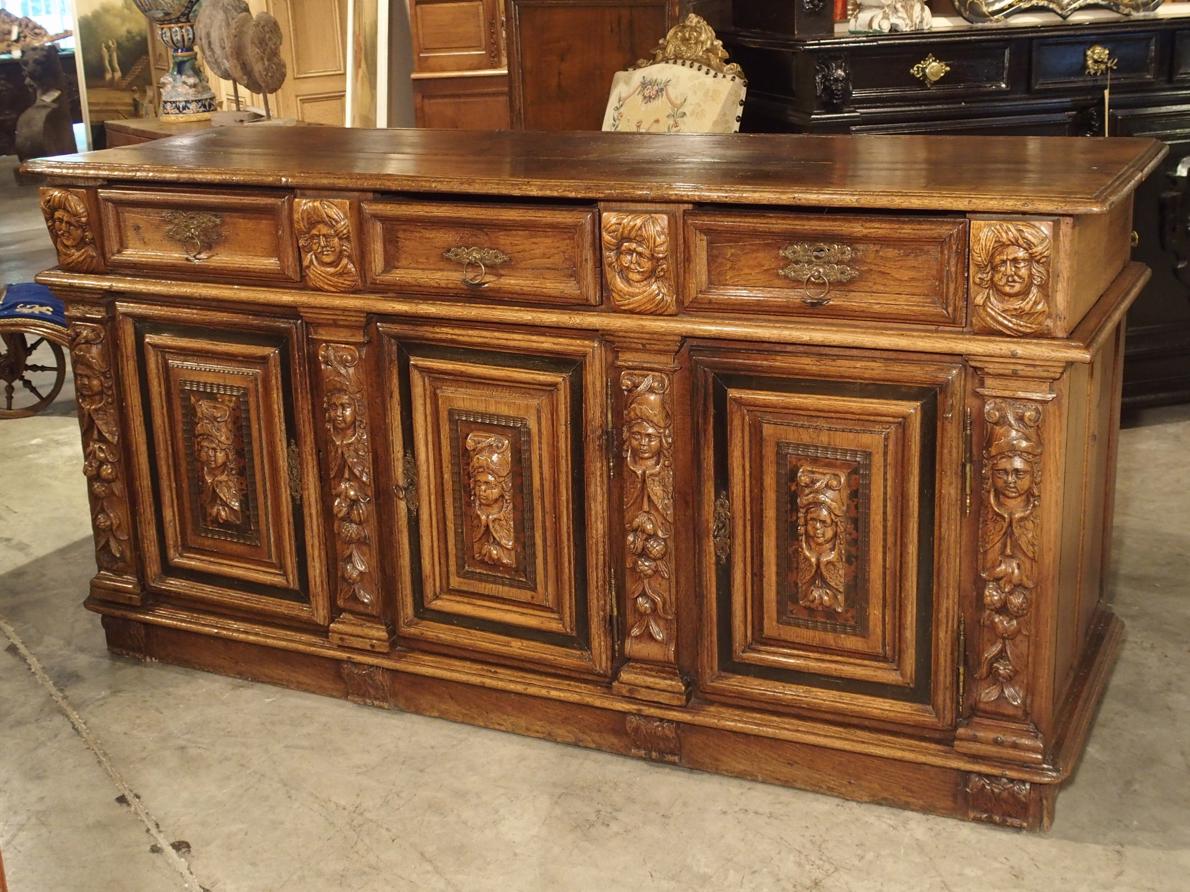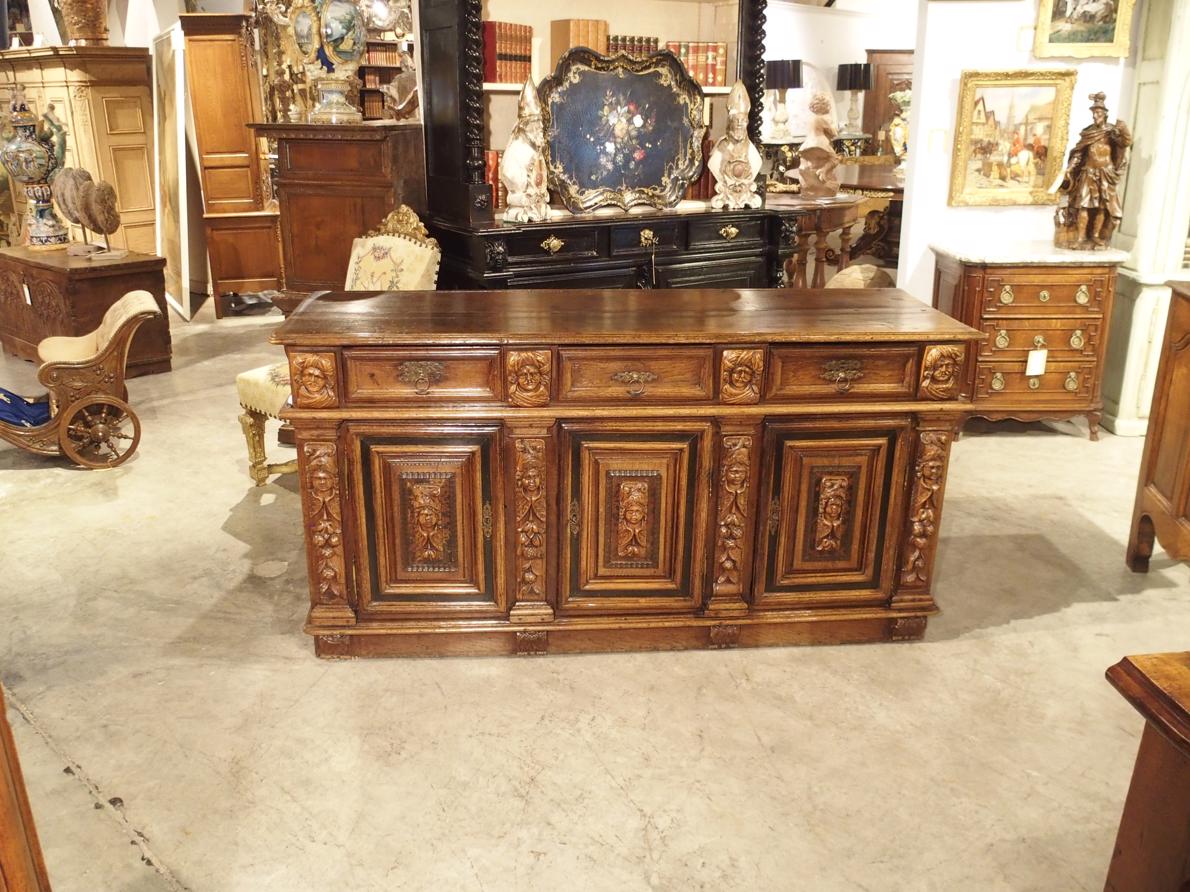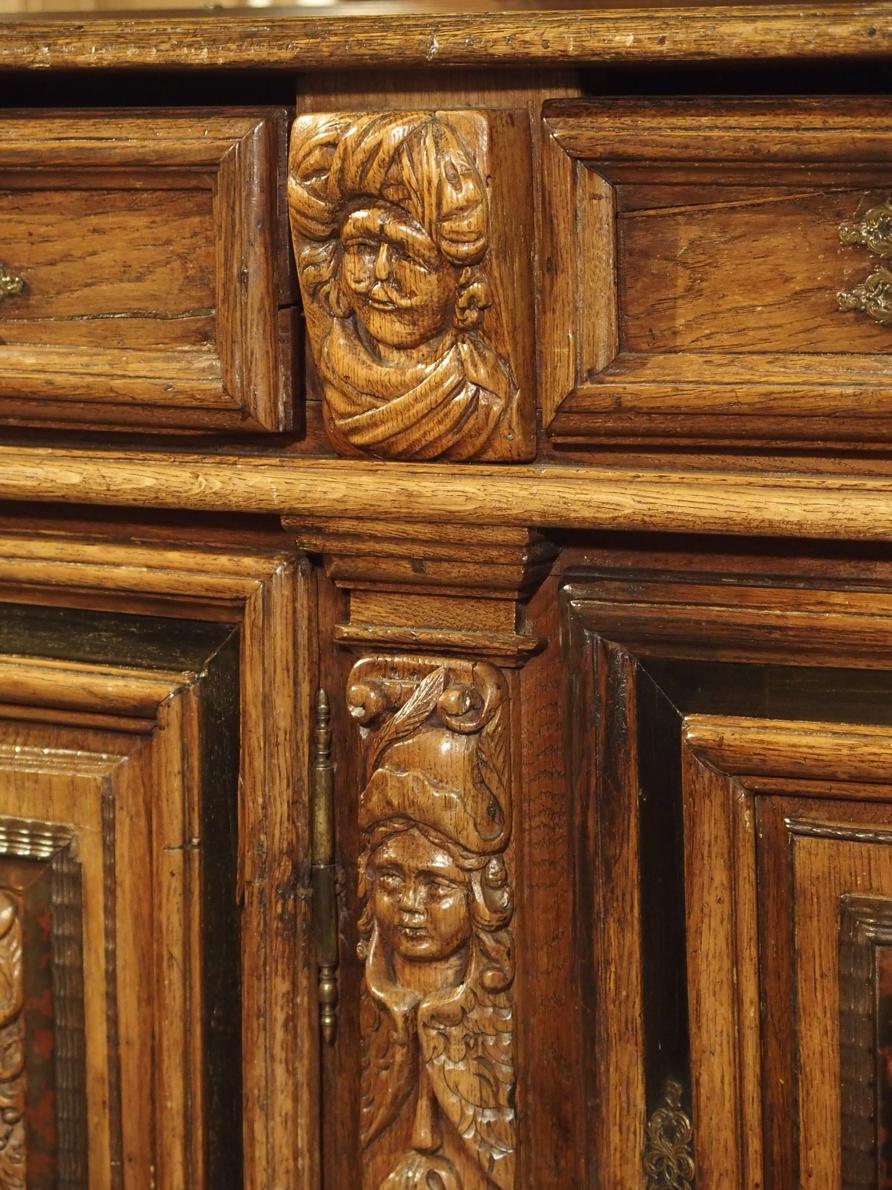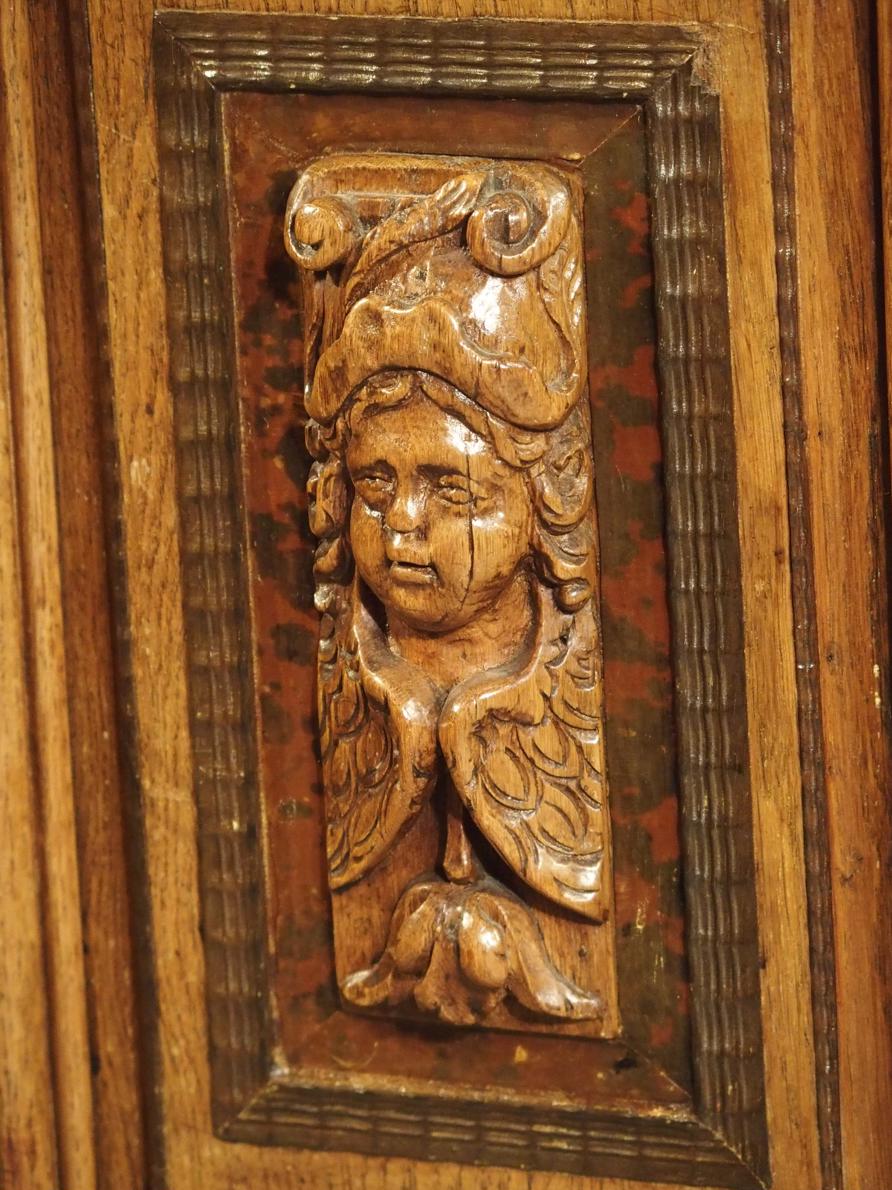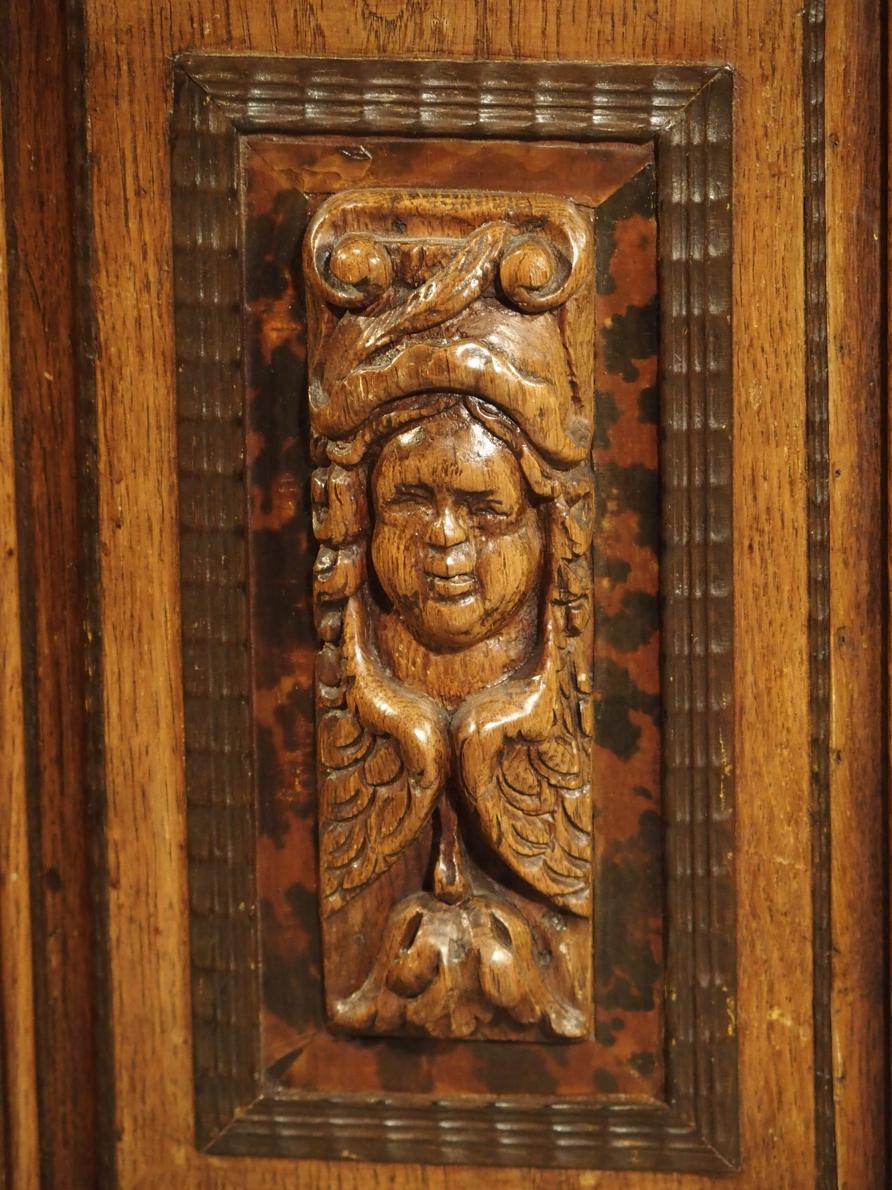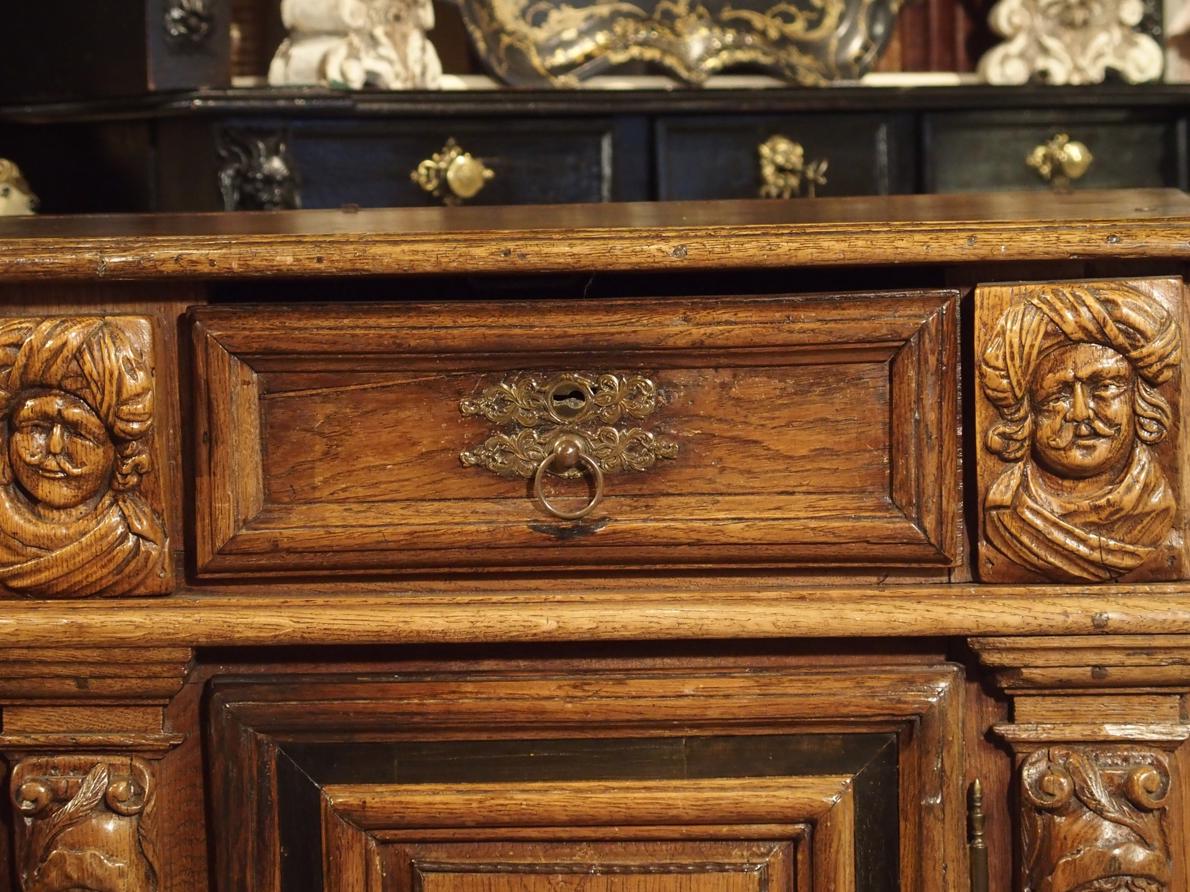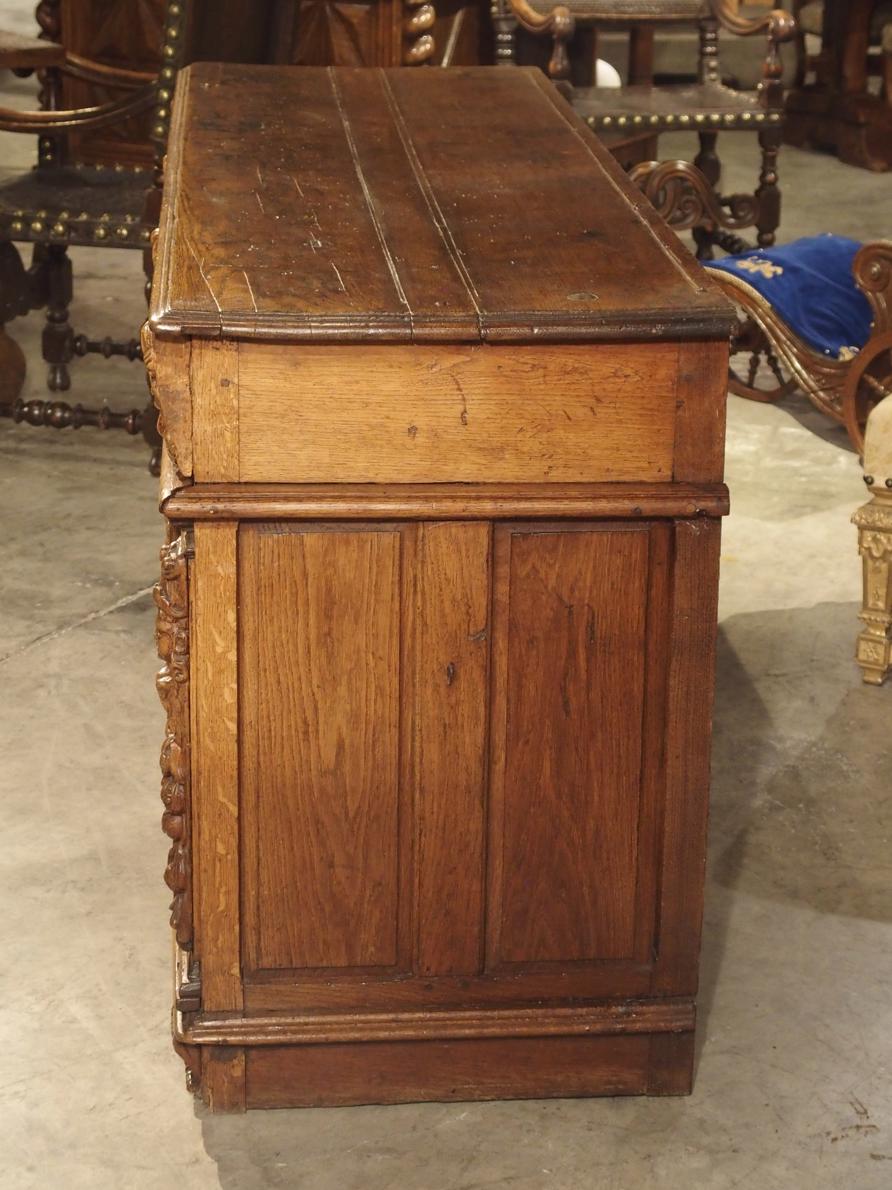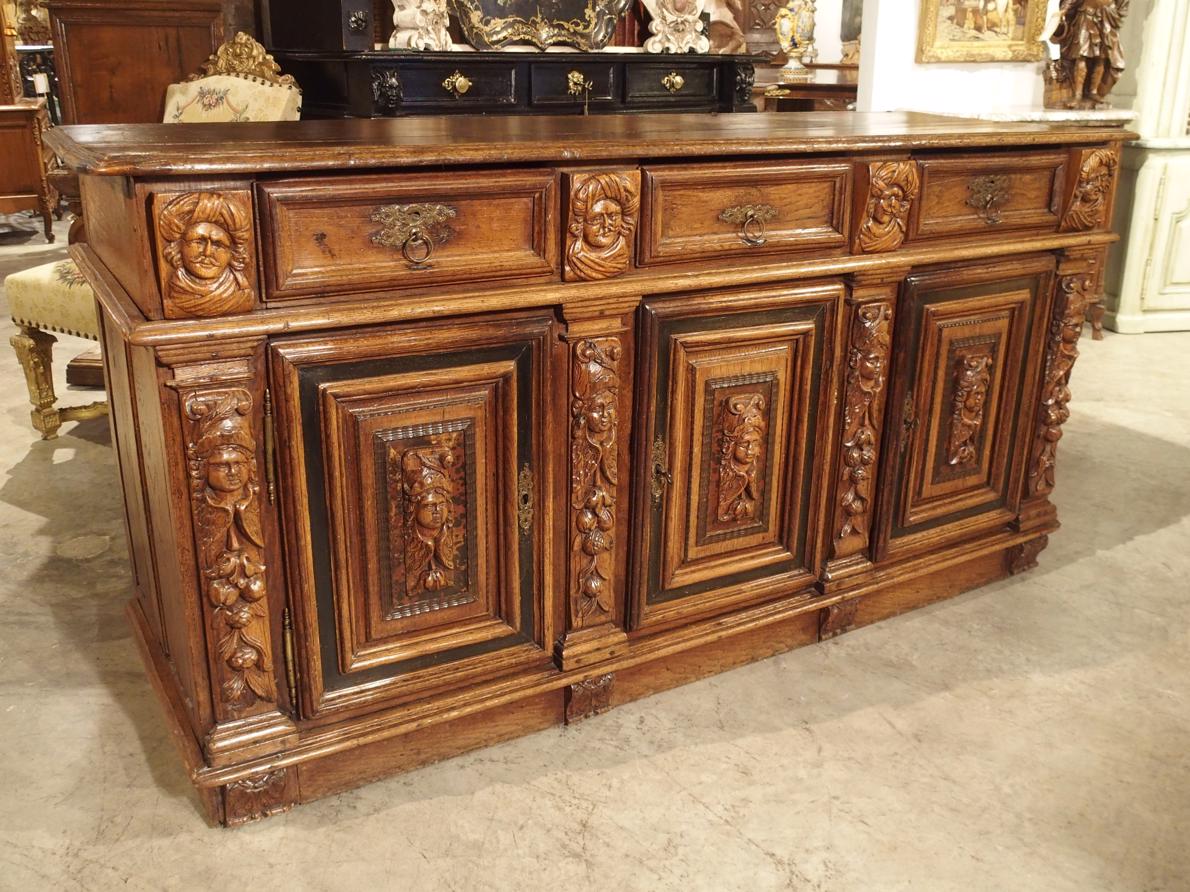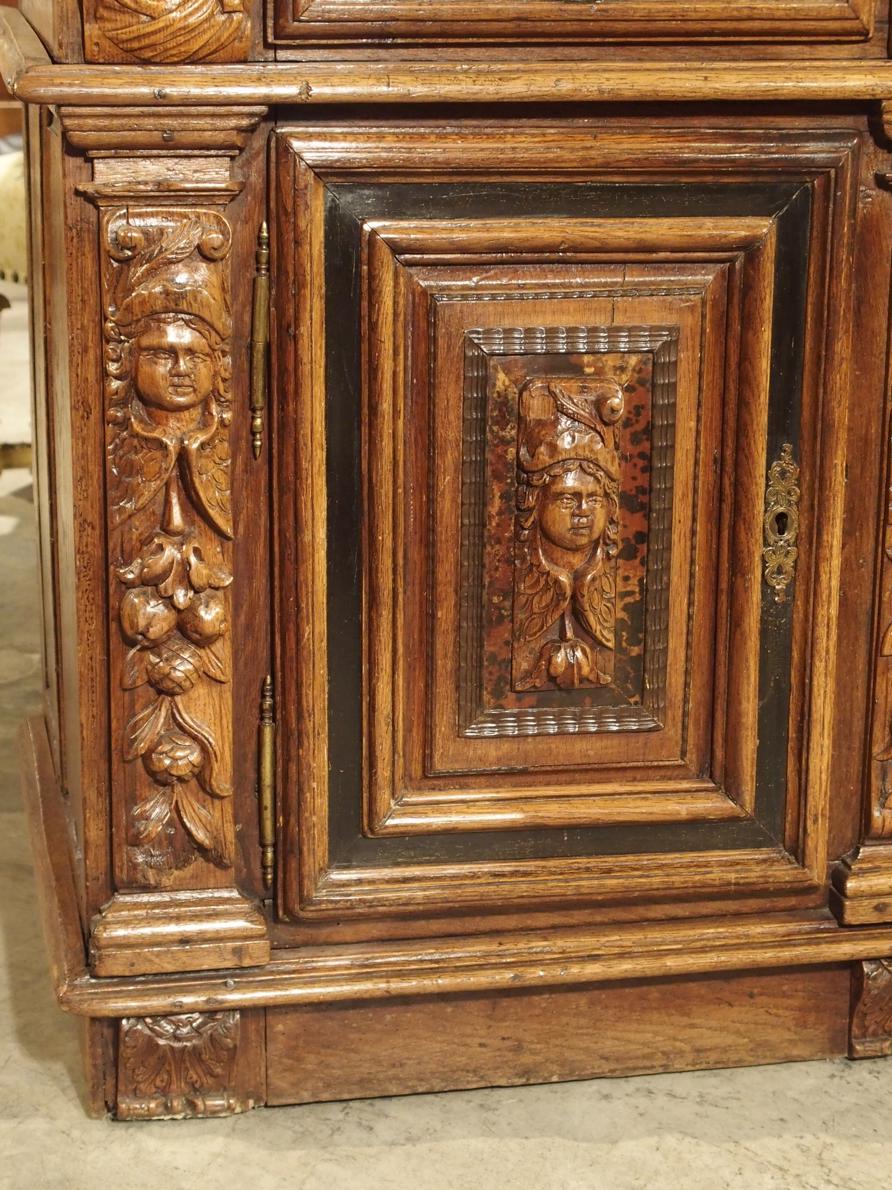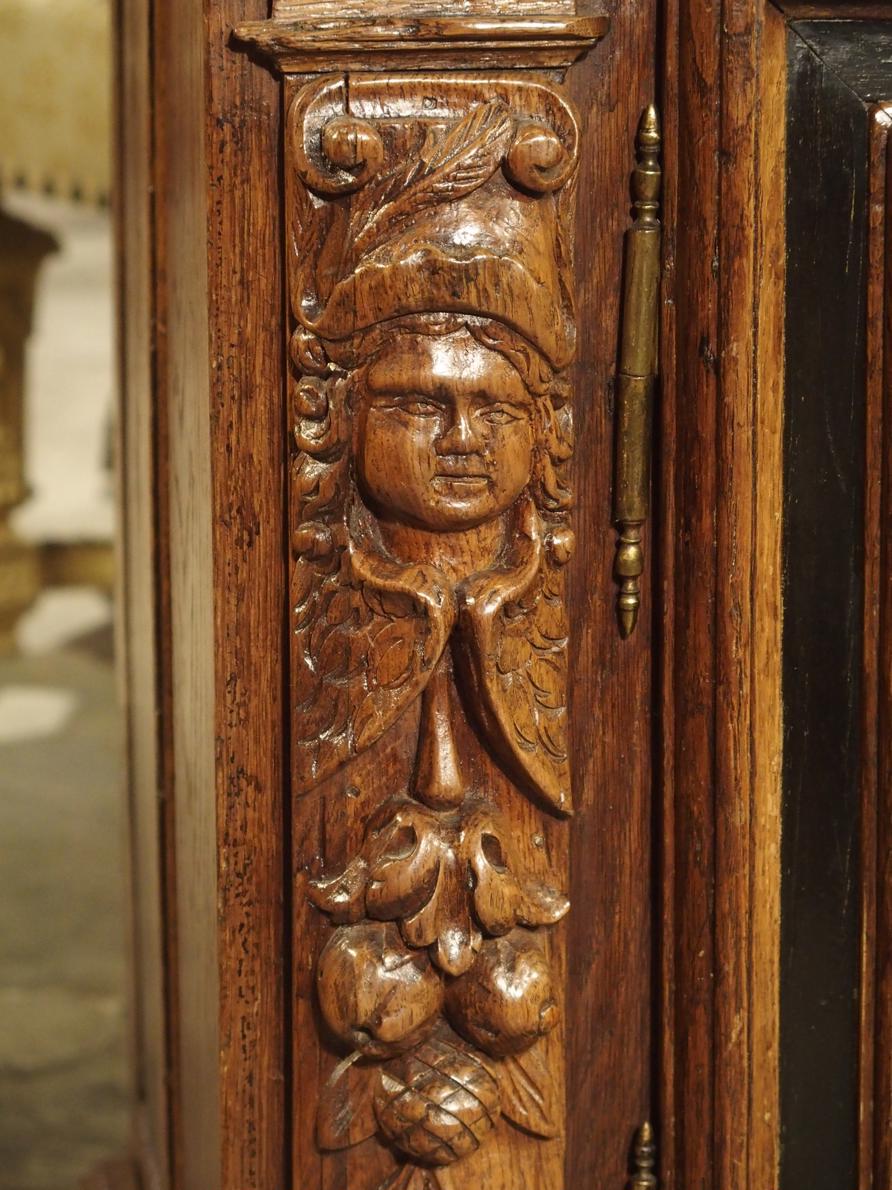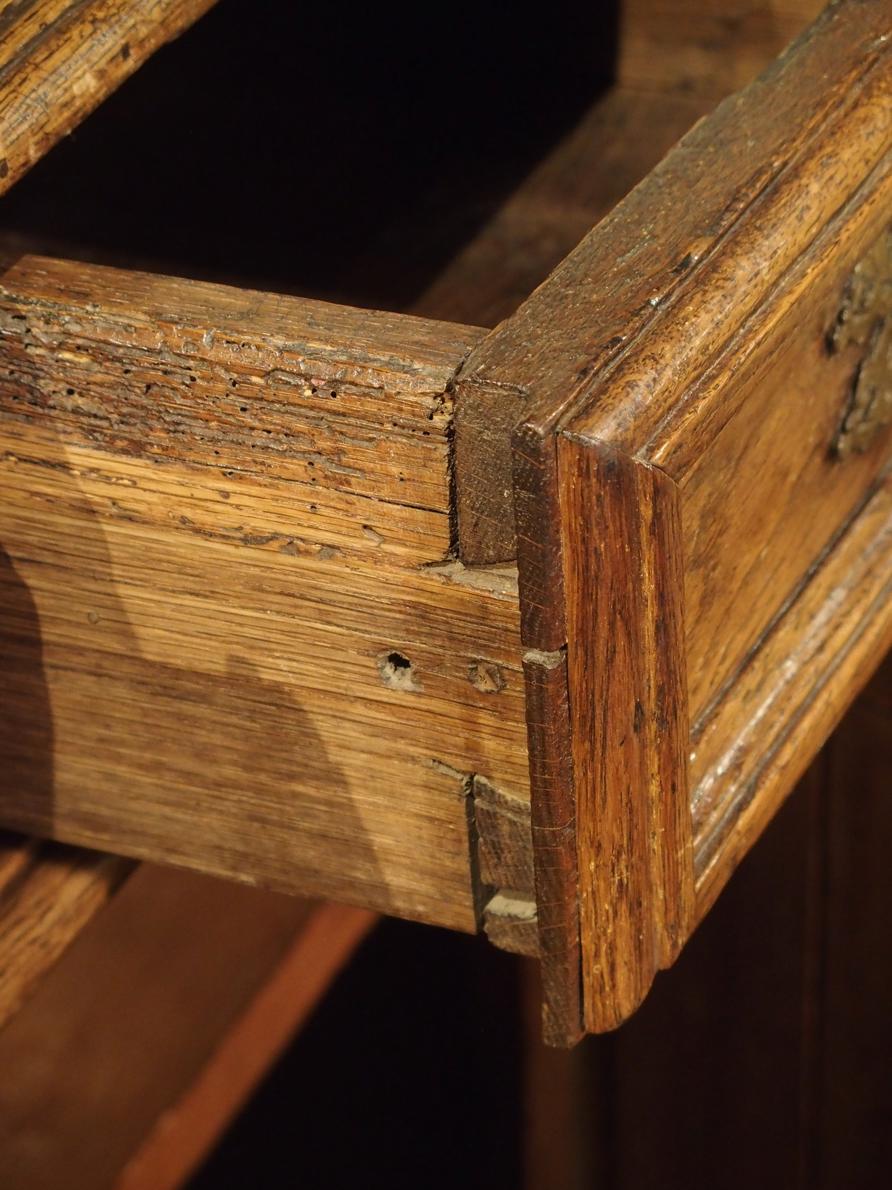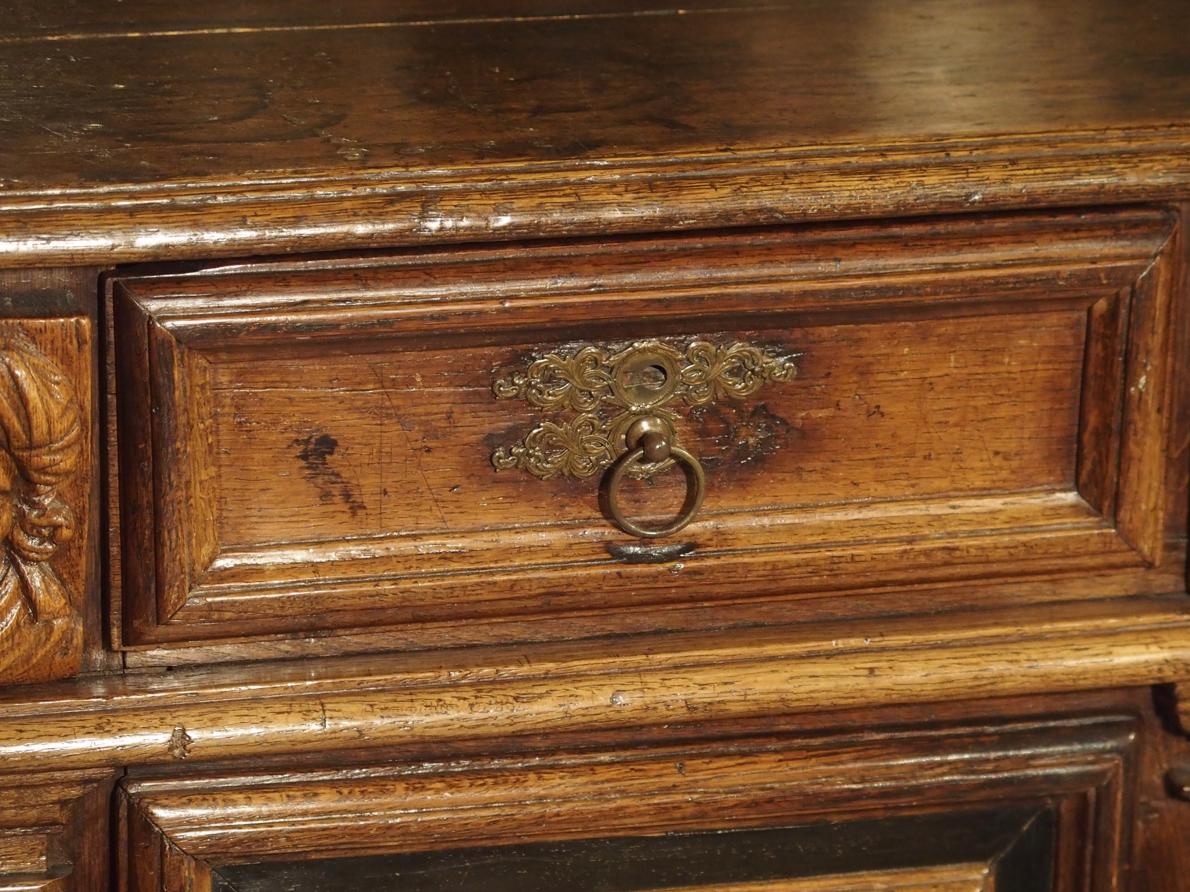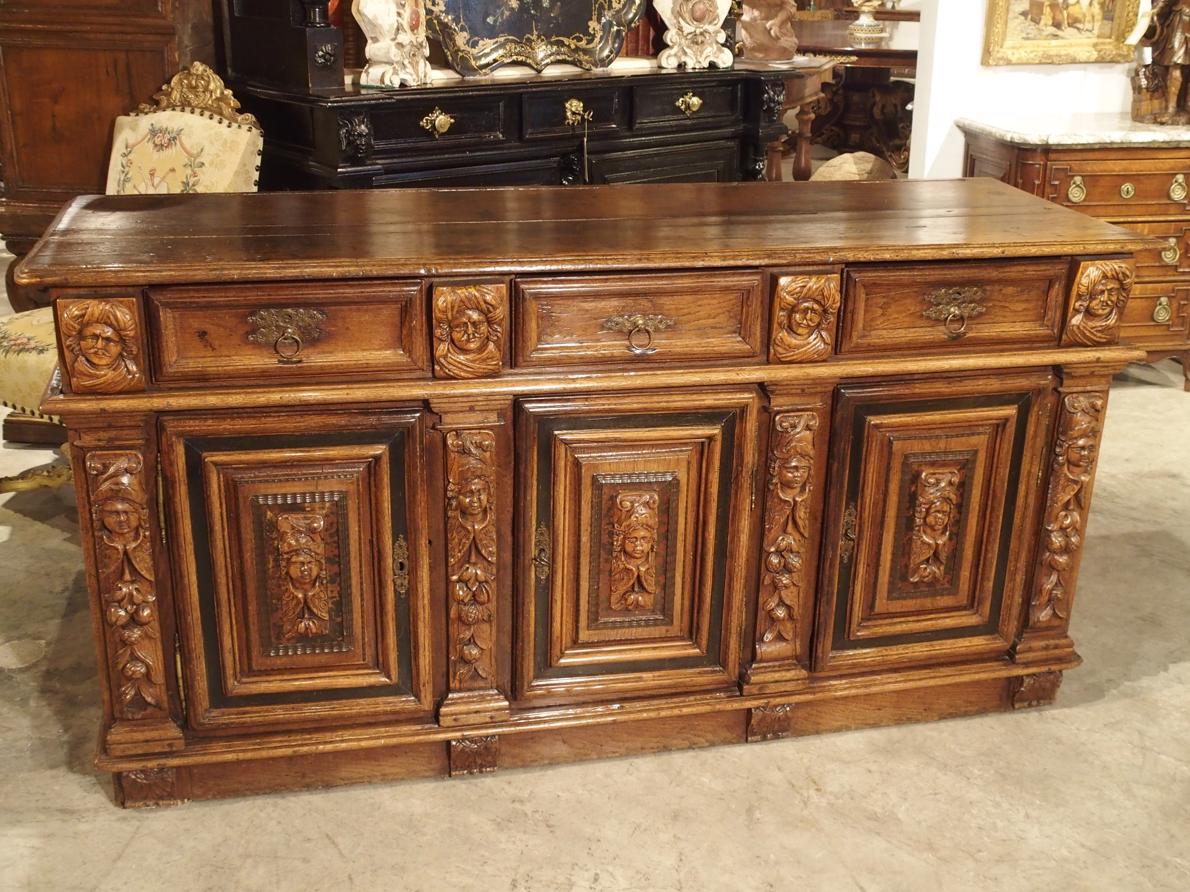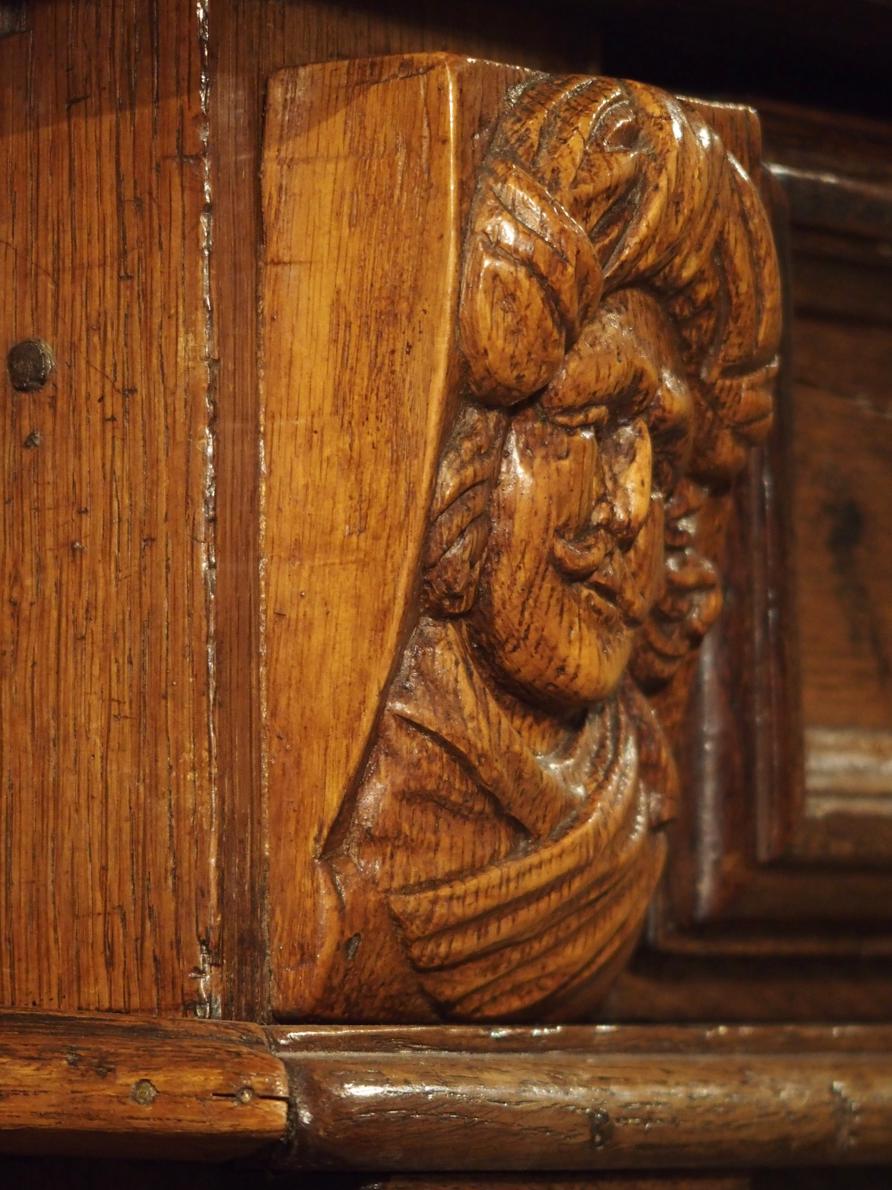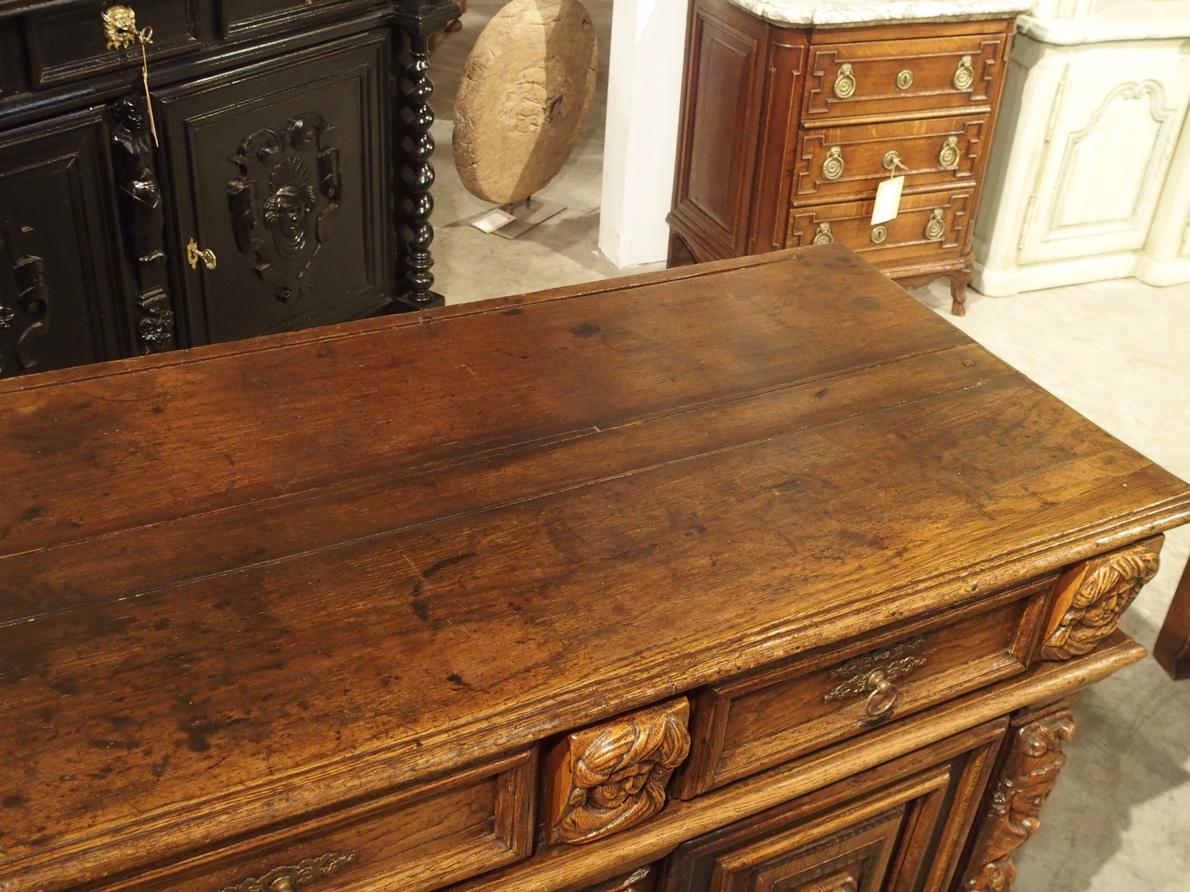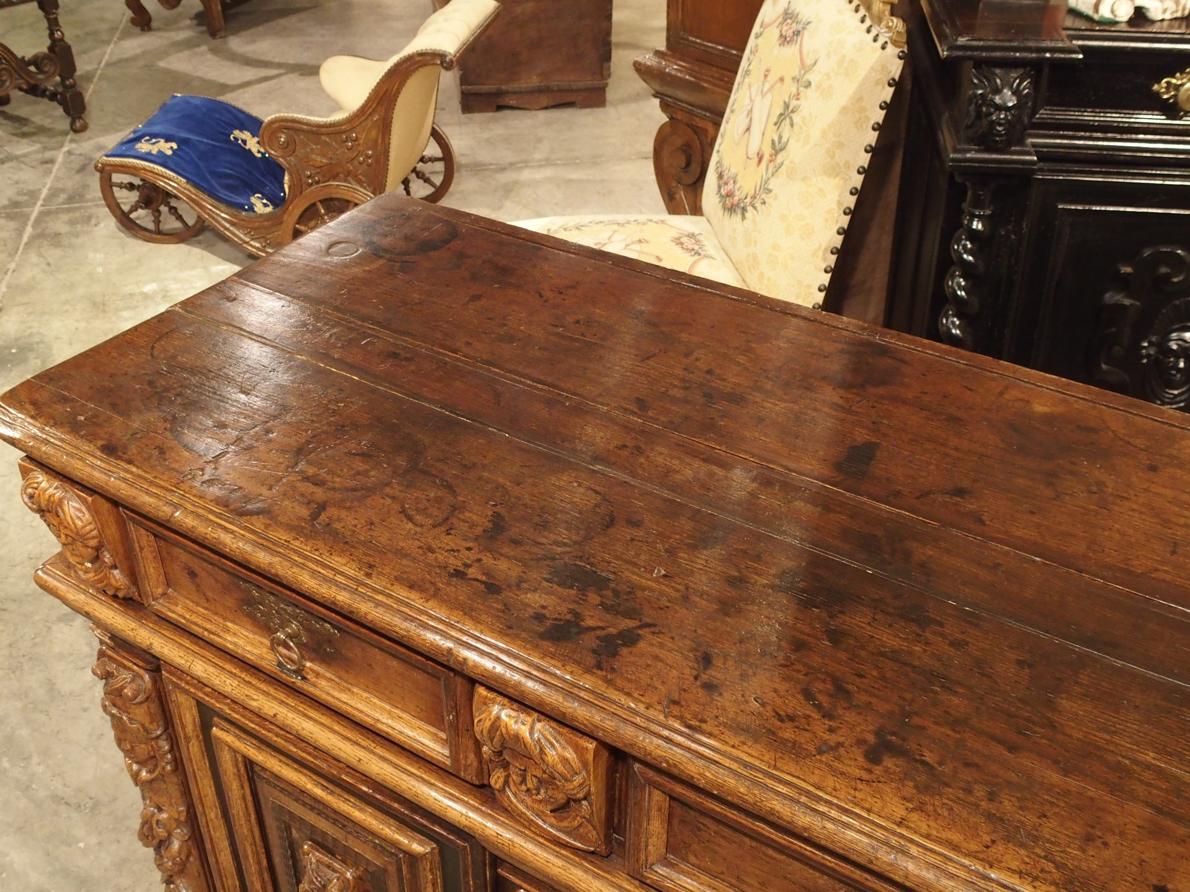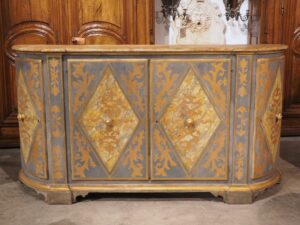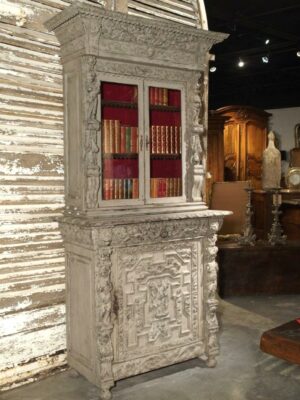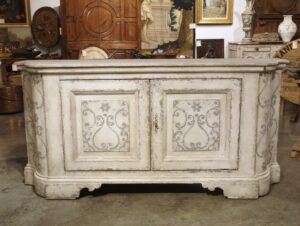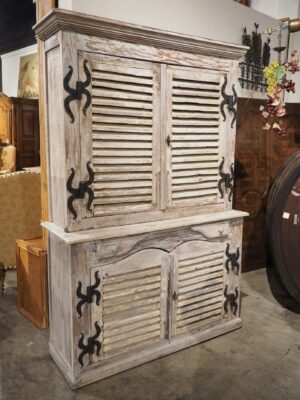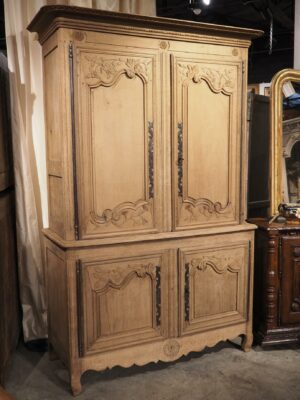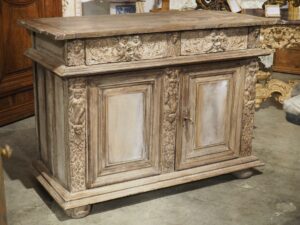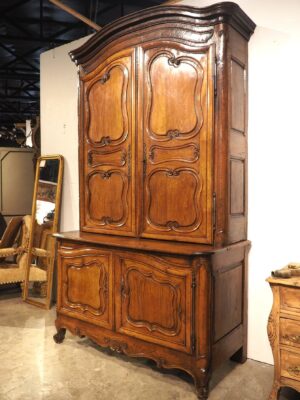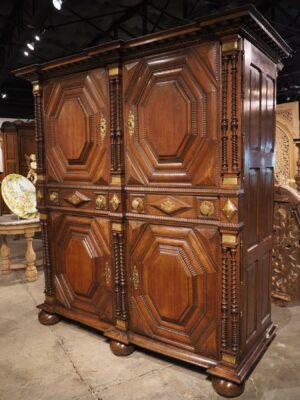This beautiful and rare three door enfilade buffet comes from northern Europe, most likely the Netherlands or Flanders. This type of furniture can also be called a Dresche. Along the back of the top, is a thin groove for displaying fine plates before being placed on the dining table. The plates would simply rest against the wall behind the enfilade.
Flanders is the Dutch speaking area of Belgium that was an independent country in the mid-1600’s when this buffet was produced. During the Dutch Golden Age (roughly 1588-1672), the Dutch were dominant forces in science, art and business. The Dutch East India Company was the preeminent European trading company and had many routes to Asia and India.
On this piece, we see characters wearing feathers and Turkish heads (possibly Suleiman the Magnificent). It was probably inspired from engravings and collections of prints of the time (by the Antwerp publishers). This period is the beginning of Orientalism. In the 17th century Holland was a great maritime power (Dutch India Company) and it is not surprising to have references to Native American and Eastern cultures.
The enfilade was constructed using ebony wood and tortoiseshell. These materials can be seen on many cabinets from the Netherlands, specifically the marquetry works of André Charles Boulle. The mascarons on the three doors are surrounded by a series of veneers, which include the previously mentioned ebony wood, tortoiseshell and undulating listello. The doors are flanked by mascarons wearing feathers that sit on top of fruited margents. Above each door is a drawer with brass pulls and interlaced keyplates. Flanking the drawers are the mascarons wearing head wraps.
The buffet is constructed out of thick oak wood, which is consistent with furniture from northern Europe. This lovely 17th century enfilade buffet or “dresche” is highly unusual compared to enfilades of the same period. The combination of rustic oak planks, unique figural carvings, and inlays will make this piece the focal point of any area it is placed in.
CONDITION: Good strong overall antique condition. Age separations, rubs, nicks, minor losses of wood, and some ring marks to top as seen in photos. Escutcheon black plate missing on left and center drawer.


